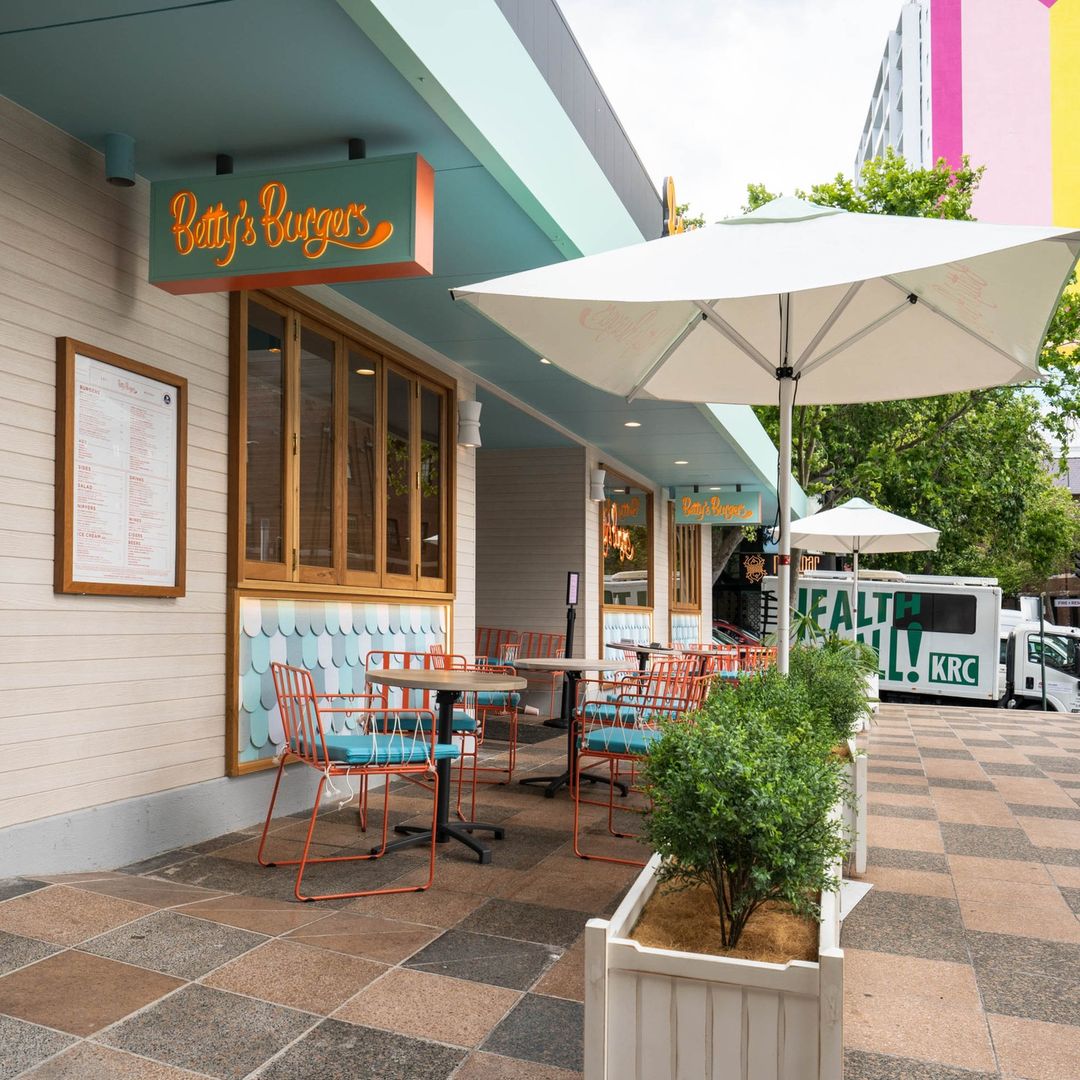Modern – Retro – How Does it Work?
Fast food retail is an ever-evolving industry that’s always looking for new ways to innovate and stay ahead of the curve.
Shop fitting evolution is important to this, as it can greatly impact customer experience and satisfaction. We all know whether it’s a bar, a club, a car or a house, you NEVER get a second chance to make a 1st impression!
In this article, we’ll take a detailed look at some of the latest innovations in fast food retail shop fitouts, with a particular focus on Betty’s Burgers.
A Seismic Change in the 21st Century
In Australia, the 21st century has seen a shift towards more modern and innovative shop fitout styles.
Aesthetically, there is a greater emphasis on creating a unique and immersive experience for customers, with many brands using bold graphics, bright colours and creative lighting to make their stores stand out. An interior designer’s dream.
The Importance of Materials
One key trend in shop fitouts is the use of natural materials, such as timber, stone and greenery. These materials provide a more natural feel to the store, which most people and the younger generation are now looking for.
Technologies Influence
Another trend is the use of technology in-store design. For instance, many stores now feature interactive digital displays, virtual reality experiences and mobile ordering systems.
These technologies can enhance the overall customer experience and streamline the ordering process.
One particularly unique example of a modern shop fitout in Australia is the use of shipping containers. Shipping containers can be stacked and arranged in various ways to create a unique and visually striking store design while being cost-effective and easy to transport.
Moving Forward
The 21st century has seen a move towards more innovative and visually striking shop fitouts in Australia.
Natural materials, technology and unique designs are all key trends that are shaping the future of the fast-food retail industry.
Shop fitouts have come a long way since the turn of the 21st century. Back then, materials such as timber, laminate and stainless steel were commonly used, and the overall design was often quite basic and functional.
The focus was primarily on efficiency and cost-effectiveness rather than creating an enjoyable customer experience.
However, as the fast food industry has become increasingly competitive, many brands have started to invest more heavily in their shop fitouts. This has introduced a range of new materials and design concepts.
Today, shop fitouts often make use of materials such as glass, polished concrete, and natural timber. The overall design is much more focused on creating a unique experience for customers, with features such as bold graphics, interactive digital displays, and comfortable seating areas.
Betty’s Burgers’ Go Retro While Going Modern and Eco-Friendly
Betty’s Burgers is a fast food chain that has been making a concerted effort to lower its carbon footprint through its shop fitouts.
In recent years, they have introduced a range of sustainable design elements and features to their stores.
One of the key ways that Betty’s Burgers has reduced its carbon footprint is by using recycled and sustainable materials in its fitouts. For example, they use recycled timber for their tabletops and reclaimed bricks for their walls. They also use energy-efficient lighting and appliances in their stores.
In addition to using sustainable materials, Betty’s Burgers has also made changes to its overall store design to create a more eco-friendly environment.
For instance, they have introduced:
- Living walls
- Indoor plants to improve air quality and reduce their carbon footprint
- Installed water-saving fixtures and fittings in their stores to conserve water
Aesthetically, Betty’s Burgers has a distinctive retro-inspired style that includes bold colours, neon signs and vintage decor. However, they have also introduced more modern design elements, such as polished concrete floors and industrial-style lighting, which help to create a contemporary and welcoming atmosphere.
Betty’s Burgers’ recent shop fitouts have been designed with sustainability and aesthetics in mind. By using recycled, energy-efficient and sustainable materials, they can create a unique and visually striking store design that reduces their environmental impact.
This has not gone unnoticed in Australia either, with the Sydney Morning Herald running stories about their new eco-friendly approach and the fact that, given the current economic climate, they are looking to open another 20 to 25 stores.
With their new private equity owners and a general new approach to kickstarting environmental programmes and getting people back to work, it is one of Australia’s few recent success stories and long may it continue!
SUMMARY
The evolution of shop-fitting fast food retail shops has been driven by a desire to create an environment in which customers enjoy spending time while also being functional and efficient for staff. As the industry continues to evolve, it will be interesting to see what innovations are introduced in the coming years. But Betty’s Burgers’have certainly stole a march on the competition.



